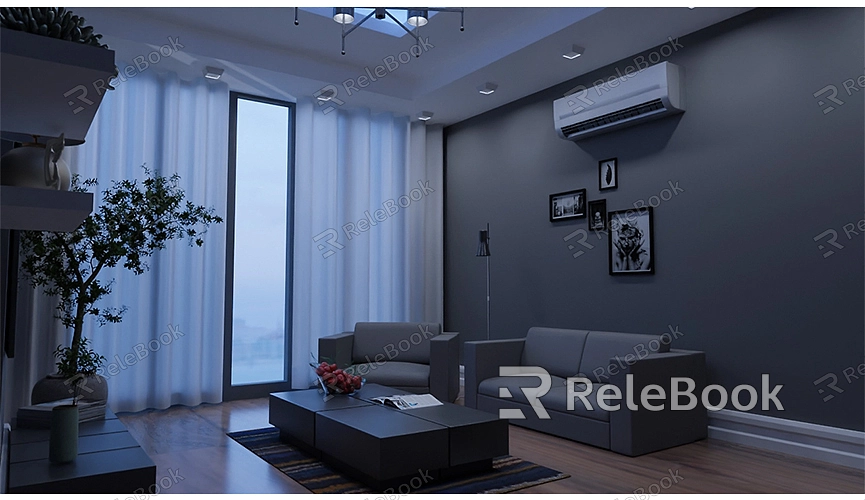How to Turn On 3D Modeling in AutoCAD
AutoCAD is a powerful computer-aided design (CAD) software widely used in fields like architectural design, engineering drawing, and product design. While AutoCAD is primarily known for its 2D drafting capabilities, its 3D modeling functions are equally robust, enabling users to create detailed 3D models. For those new to AutoCAD, it may not be immediately clear how to enable and use the 3D modeling features. This article will guide you through the steps to activate 3D modeling in AutoCAD and provide practical tips to help you efficiently complete your 3D design tasks.

Enabling 3D Modeling Mode
Activating 3D modeling mode in AutoCAD is the first step to creating and editing 3D models. Here’s how to enable 3D modeling mode:
1. Launch AutoCAD: Open the AutoCAD software. If you're using AutoCAD for the first time, it’s recommended to use the latest version to ensure you have access to the newest features and tools.
2. Select Workspace: AutoCAD offers various workspace layouts, including “2D Drafting” and “3D Modeling.” To enable 3D modeling, switch to the “3D Modeling” workspace. In the lower-right corner of the interface, click the workspace switch button and select “3D Modeling.” This will automatically adjust your interface layout to accommodate 3D modeling needs, providing more tools and features related to 3D.
3. Enable 3D Toolbars: Once you switch to the 3D modeling workspace, you’ll see toolbars and panels related to 3D modeling, such as the “Modeling” toolbar and “View” toolbar. If these toolbars don’t appear, right-click on the toolbar area and select “Show All Toolbars” to enable them.
4. Set Up View: To better view and manipulate your 3D models, switch to an appropriate view mode. Choose “Isometric View” or “Perspective View” in the view controller for a more intuitive representation of your 3D model.
Basic 3D Modeling Operations

With 3D modeling mode enabled, you can start creating and editing 3D models. Here are some basic 3D modeling operations:
1. Create Basic Shapes: In the “Modeling” toolbar, you can choose to create basic 3D shapes such as cubes, spheres, and cylinders. Click the appropriate tool and specify the size and location of the shape in the drawing area. You can also draw a 2D outline and use the “Extrude” tool to stretch it into a 3D shape.
2. Edit 3D Objects: Use the “Modify” tools to edit 3D objects. For example, use the “Stretch” tool to change the shape of an object, the “Trim” tool to cut parts of an object, or the “Boolean” tool to combine or slice multiple objects.
3. Apply Materials and Textures: Enhance the realism of your 3D objects by applying materials and textures. Select the “Material Editor” tool to set different material properties and apply them to your model. You can adjust the material's color, glossiness, and texture for the desired effect.
4. Adjust View and Render: Use the “View” tools to adjust your perspective for better visibility of the 3D model. Utilize the “Render” tool to generate high-quality images or animations of the model for presentation and sharing. In the render settings, you can adjust lighting, shadows, and other visual effects to enhance image quality.
Advanced 3D Modeling Tips
To improve the efficiency and quality of your 3D modeling, consider the following advanced tips:
1. Use Shortcuts: Familiarize yourself with AutoCAD shortcuts to significantly enhance modeling efficiency. For instance, use the `E` shortcut to activate the “Extrude” tool and the `C` shortcut for the “Cut” tool, speeding up your workflow.
2. Utilize Layers and Groups: Organizing related 3D objects into the same layer or group can make managing and editing complex models easier. Create different layers in the layer manager to group and manipulate different parts of your model.
3. Reference Examples and Templates: Before starting your modeling, consider referencing examples or using templates to expedite the process. AutoCAD offers many preset templates and examples to help you get started quickly.
4. Optimize Model Performance: When creating complex 3D models, optimizing performance is crucial. Simplify unnecessary details and reduce excessive faces and vertices to improve rendering speed and editing efficiency.
5. Use Plugins and Extensions: AutoCAD supports many third-party plugins and extensions that can provide additional functionalities and tools, helping you model more efficiently. Install and use plugins that suit your project needs.
Resources and Support
If you need more help or resources for 3D modeling, online platforms and communities can offer valuable support. Many users share tutorials, tips, and solutions on these platforms. Additionally, if you require high-quality 3D textures and HDRIs for your models and virtual scenes, you can download them for free from [Relebook](https://textures.relebook.com/). If you need stunning 3D models, you can also find them at [Relebook](https://3dmodels.relebook.com/), which offers a wealth of premium 3D resources to enhance your design quality and efficiency.
Enabling 3D modeling in AutoCAD is straightforward—simply switch to the appropriate workspace and make the necessary settings. By mastering basic modeling operations and applying some advanced techniques, you can efficiently tackle various 3D design tasks. Understanding how to create and edit 3D models, apply materials and textures, and adjust views and render will help you achieve outstanding design results. I hope this guide helps you successfully navigate 3D modeling and create satisfying design works.

